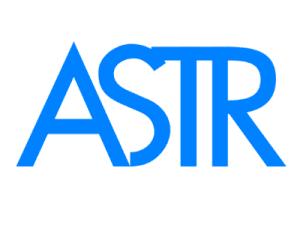Understanding Migraine Headaches: Key Information and Treatment Approaches
Understanding Migraine Headaches: Key Information and Treatment Approaches
Migraine headaches are a common symptom of underlying neurological conditions. They represent a chronic and recurring health problem that affects about 30% of those who experience headaches [1]. Migraines can significantly disrupt a person’s focus, concentration, and productivity. While over-the-counter pain medications and home remedies may provide temporary relief, lasting pain relief requires treatment strategies that address the root cause.
What Are Migraine Headaches?
Migraine is defined by the occurrence of unilateral headaches ranging from mild to severe intensity. The episodes of migraine headaches are caused by multiple factors. Post-pubertal women are more prone to migraines than men. Migraines can be classified as acute or chronic, depending on whether the headache episodes occur for fewer than 15 days per month or more, respectively. Migraines contribute significantly to the global disease burden and can negatively affect an individual’s overall work performance [2, 3].
Causes and Triggers of Migraine Headaches
Migraine headaches have a complex and multifactorial origin. Many migraine sufferers have a genetic predisposition, with environmental factors often acting as triggers that induce symptoms. Common triggers are listed below in order of their prevalence [4]:
- Stress, anxiety, and other mental health conditions.
- Hormonal changes, especially in women, which become more noticeable during pregnancy and menstruation, leading to migraines during these times.
- Major or sudden changes in sleep patterns and appetite.
- Weather changes, which are linked to migraines in around 53% of patients.
- Exposure to bright or flashing lights.
- Excessive use of tobacco and alcohol.
- Certain foods and ingredients that can trigger migraines in sensitive individuals.
- Intense physical activity, such as strenuous exercise.
- Sexual activity can trigger migraines in approximately 5% of sufferers.
- Impaired blood flow to the brain, which is a major issue for migraine sufferers. Poor posture, particularly forward bending, can restrict blood flow to the brain, triggering headaches. Additionally, fascial restrictions and spasms in the vertebral artery can also contribute to migraines. Reducing exposure to environmental triggers can help lower the frequency and intensity of migraine headaches.
Symptoms of Migraine Headaches
Symptoms of migraine headaches can last from a few hours to up to three days. Common symptoms include [5]:
- Unilateral headache, ranging from mild to severe.
- Nausea and dizziness.
- Vomiting.
- Pale or dull skin appearance.
- Increased sensitivity to sound (hyperacusis) and light (photosensitivity) during migraine attacks.
- Blurred or impaired vision.
- Sensitivity to smells.
- Loss of appetite.
Types of Migraine Headaches
Migraines are mainly classified into two types: migraines with aura and migraines without aura. An aura consists of sensory disturbances experienced before or during a migraine attack [6].
Migraine With Aura
Approximately one-third of migraines fall into this category. Aura symptoms are reversible and can be visual, sensory, speech-related, motor, retinal, or connected to the brainstem. Visual symptoms may include blind spots, blurry vision, temporary loss of vision, and wavy lines in the visual field.
Migraine Without Aura
This type accounts for the majority of migraines. Symptoms of migraine without aura include nausea, vomiting, irritability, low blood pressure, and dark circles under the eyes. Patients may also experience light sensitivity (photosensitivity) and sensitivity to sounds (hyperacusis).
Understanding the Normal Healing Cycle
To effectively treat migraines, it is important to understand the normal healing cycle, which consists of three stages: inflammation, proliferation, and maturation.
Fase infiammatoria
During this stage, the body recruits inflammatory cells to the site of injury. These inflammatory mediators cause redness, swelling, pain, and warmth. The primary aim is to eliminate the source of inflammation.
Fase di proliferazione
This stage involves reepithelialization and new blood vessel formation. Fibroblasts lay down collagen fibers that provide a framework for healing.
Fase di maturazione
The maturation stage marks the resolution of the healing process. In cases of chronic inflammation, the healing cycle repeatedly shifts between the inflammatory and proliferative stages, preventing full resolution.
Ineffective Treatments for Migraine Headaches
Several home remedies and clinical techniques are commonly used to relieve migraines, but they often provide only temporary relief and do not address the inflammation or proliferation stages of the healing cycle. Ineffective treatments include ice and heat therapy, electrical stimulation, massage, foam rolling, muscle stretching, and strengthening exercises during the inflammation stage. Some of these treatments can even exacerbate migraine symptoms.
Effective Treatments for Migraine Headaches
Although medications for migraines can provide short-term relief, they are often associated with rebound headaches and can even trigger migraine symptoms. A comprehensive treatment plan to alleviate and reduce the frequency and severity of migraines includes:
- Limiting exposure to environmental triggers.
- Maintaining proper posture to ensure adequate blood flow to the brain and prevent muscle abnormalities.
- Avoiding foods known to trigger migraines, such as alcohol and caffeine.
- Addressing the inflammation stage through:
- Following an anti-inflammatory diet.
- Correcting vitamin and mineral deficiencies.
- Using the MagnaHeal device, which utilizes magnetic therapy to reduce inflammation.
- Myofascial trigger points and fascial adhesions can also contribute to migraines, especially during the prolonged proliferation stage of healing [7, 8]. Resolving this stage involves:
- Using the A1 tool to release restrictions in the superficial and aponeurotic fascia.
- Using the A3 tool to release superficial scar tissue and trigger points.
- Using the A5 tool to release deep scar tissue, trigger points, and restrictions in the epimysium, perimysium, and endomysium fascia layers.
- Patient compliance with the treatment plan is essential for optimal results.
Conclusione
Migraine headaches are a debilitating condition, and various avoidable environmental triggers should be managed to reduce the frequency and intensity of episodes. An effective treatment plan involves minimizing exposure to triggers, following an anti-inflammatory diet, utilizing magnetic therapy, and addressing fascial restrictions, scar tissue, and trigger points.
Riferimenti
- https://www.who.int/news-room/fact-sheets/detail/headache-disorders
- https://pubmed.ncbi.nlm.nih.gov/32809622/
- https://www.ncbi.nlm.nih.gov/pmc/articles/PMC4416971/
- https://www.ncbi.nlm.nih.gov/books/NBK560787/
- https://www.ncbi.nlm.nih.gov/books/NBK279373/
- https://www.ncbi.nlm.nih.gov/pmc/articles/PMC6734209/
- https://thejournalofheadacheandpain.biomedcentral.com/articles/10.1186/s10194-018-0913-8
- https://pubmed.ncbi.nlm.nih.gov/30252294/

